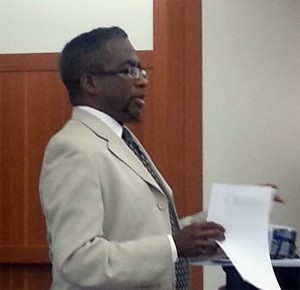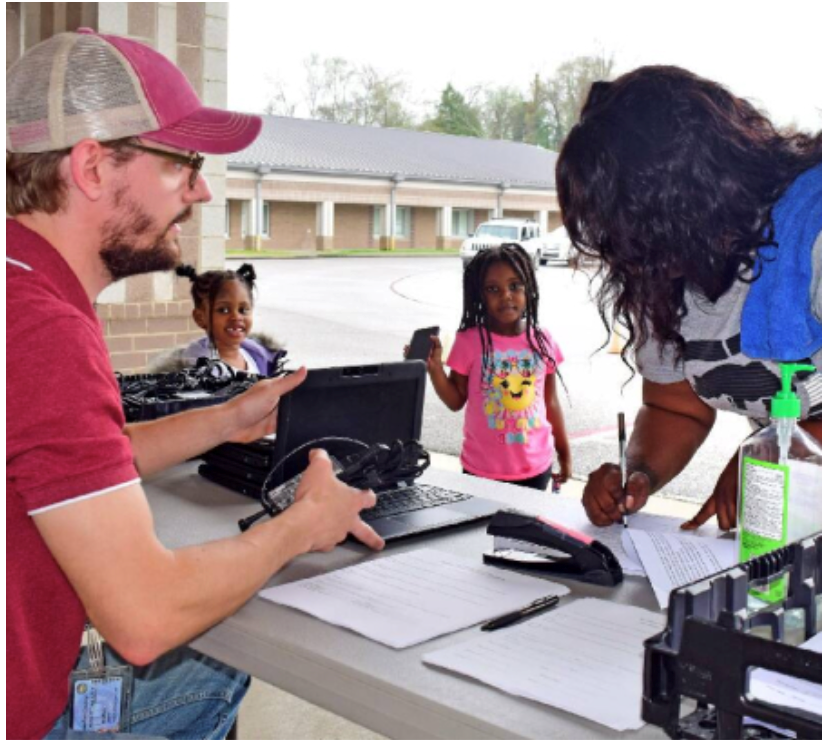Chattanooga Invests in 1,000 Telehealth Accounts for Low-Income Residents, Social Determinants of Health
Tuesday, April 25, 2023
Digital Beat
Chattanooga Invests in 1,000 Telehealth Accounts for
Low-Income Residents, Social Determinants of Health

Too often policymakers, political leaders, contractors, and consultants want to tell communities just how broadband should work for their unserved and underserved. But there should be a Prime Directive, borrowing from Star Trek, that every application presented to the National Telecommunications and Information Administration (NTIA) for the Broadband Equity Access and Deployment (BEAD) and Digital Equity Act (DEA) grant programs should bear evidence of an aggressive, community-level needs analysis conducted in all eight “covered populations” identified in the Infrastructure Investment and Jobs Act.
We seem to do an adequate job defining the needs of our rural communities, maybe because our politicians need/want their votes. And we respond to our low-income urban dwellers when they make enough noise. Sometimes. But as a society, we tend to ignore our veterans, hide our aging populations, we are uncomfortable talking to Americans with disabilities, and we ostracize mightily the incarcerated.
“We are not telling folks, we're asking them… ‘These resources - how can we be of assistance to you?’” said Deb Socia, President and CEO of The Enterprise Center, a Chattanooga nonprofit that works at the intersection of technology and inequality. “With this [telehealth] project, there’ll be a large community conversation where people tell us they need from us. Too often I’ve watched people go into a neighborhood and try to make change. But change has to come from the people who live there.”
Telehealth means more than technology
Some politicians and media drastically shortchange urban communities when they talk about the unserved and underserved needing broadband and healthcare. But digital redlining happens in urban areas as well as rural. Hours-long travel times to see doctors afflict urban residents with crappy public transportation as well as rural residents located way out in the hollows.
Chattanooga and its urban broadband network is a booming success story. The city scored another high-profile win with its recent pilot program to distribute 1,000 free telehealth accounts to people living in the most economically blighted area in the city.
Socia said, “Our pilot project is bringing a variety of resources to a beautiful but under-resourced neighborhood called Orchard Knob. We received a Tennessee Valley Authority award to work with residents, area nonprofits, and the Parkridge Medical System to identify needs and bring resources to address social determinants of health (SDH).”
Many Orchard Knob residents work but not at jobs that offer healthcare—and they earn too much to qualify for the state’s health programs. Subsequently, these residents can’t mitigate the negative effects of their SDH without the telehealth benefits. The neighborhood has high levels of diabetes, stroke, heart disease, and asthma.
The pilot project is bringing in more resources to the community than just telehealth technology. Socia said, “We’re planning to give homes indoor air quality sensors and adding home Internet access, digital skills training, and devices.” Some homes are getting energy upgrades and smart thermostats. The city tackled the accessibility and expense of public transit in these neighborhoods because Orchard Knob is a food desert. Healthy eating is key to staying healthy, so residents need better public transportation options.

in partnership with EPB and Hamilton County Schools
The Chattanooga pilot reflects how critical a component broadband is. The city’s electric power board, EPB, was part of the pilot planning from the beginning, contributed funding and is building out Wi-Fi in public spaces. Chattanooga may well maintain its pacesetter status even as the multitude of NTIA-funded digital equity projects race to completion.
“An active agent for my healthcare”
Many veterans need telehealth services. Much of the U. S. Department of Veterans Affairs’ (VA) operations involves managing healthcare for military veterans. Melodie Anderson is Telehealth Coordinator for a VA Spinal Cord Injury (SCI) unit in Virginia. “The average patient in our registry is about 60 to 75-years-old, White male, Vietnam era,” she said. A significant portion of the 40 percent of non-White patients is African Americans who are still catching up with broadband connectivity.
The VA is pursuing various telehealth and broadband solutions, while pondering new ideas. “Why are some Black patients not using telehealth?” Anderson asks. “One solution might be to create cultural-specific programs such as creative arts from different regions of the country, sharing music, doing ethnic cooking classes, or other activities that bonds patients. Explore friendly uses of technology that gets vets comfortable dipping their toes in the water.”
Andersson envisions creating “an active agent app” for veteran healthcare in which individual patients can take charge of the technology, answering the question: What does this solution look like to you? That’s what an on-going needs analysis is— broadband users taking charge of their technology and, ideally, modifying or enhancing their use.
Amanda Krupa, American Health Information Management Association (AHIMA) Foundation, has another example of taking charge of technology. “I have a family friend in his 70s who served in Vietnam and currently experiences a great deal of heart problems. The VA set him up with remote patient monitoring and didn’t discharge him until he went through a training program on how to use it. They helped him set up the app on his phone.”
Cancer rates among veterans is particularly troubling. Nearly 50,000 cases of cancer are reported annually in the VA’s Central Cancer Registry. The VA’s National TeleOncology Program provides cancer care virtually, connecting patients and providers across great distances. Similarly, private telehealth companies such as Equiva also can support veterans with cancer-focused social, emotional and healthcare support via tablet devices and the Federal Communications Commission's Affordable Connectivity Program, which makes broadband service more affordable for low income households.
How realistic is it to believe that broadband and digital inclusion planning is ever truly finished among underserved and unserved communities? Given all of the state BEAD and DEA plans and the multitude of local broadband and digital initiatives, this infrastructure building is on-going. That’s why there’s always a need for Versions 2 and 3, and more of digital equity planning.
Saved from a stroke by telehealth, broadband consultant and industry analyst Craig Settles pays it forward by uniting community broadband teams and healthcare stakeholders through telehealth initiatives.
The Benton Institute for Broadband & Society is a non-profit organization dedicated to ensuring that all people in the U.S. have access to competitive, High-Performance Broadband regardless of where they live or who they are. We believe communication policy - rooted in the values of access, equity, and diversity - has the power to deliver new opportunities and strengthen communities.
© Benton Institute for Broadband & Society 2023. Redistribution of this email publication - both internally and externally - is encouraged if it includes this copyright statement.
For subscribe/unsubscribe info, please email headlinesATbentonDOTorg






